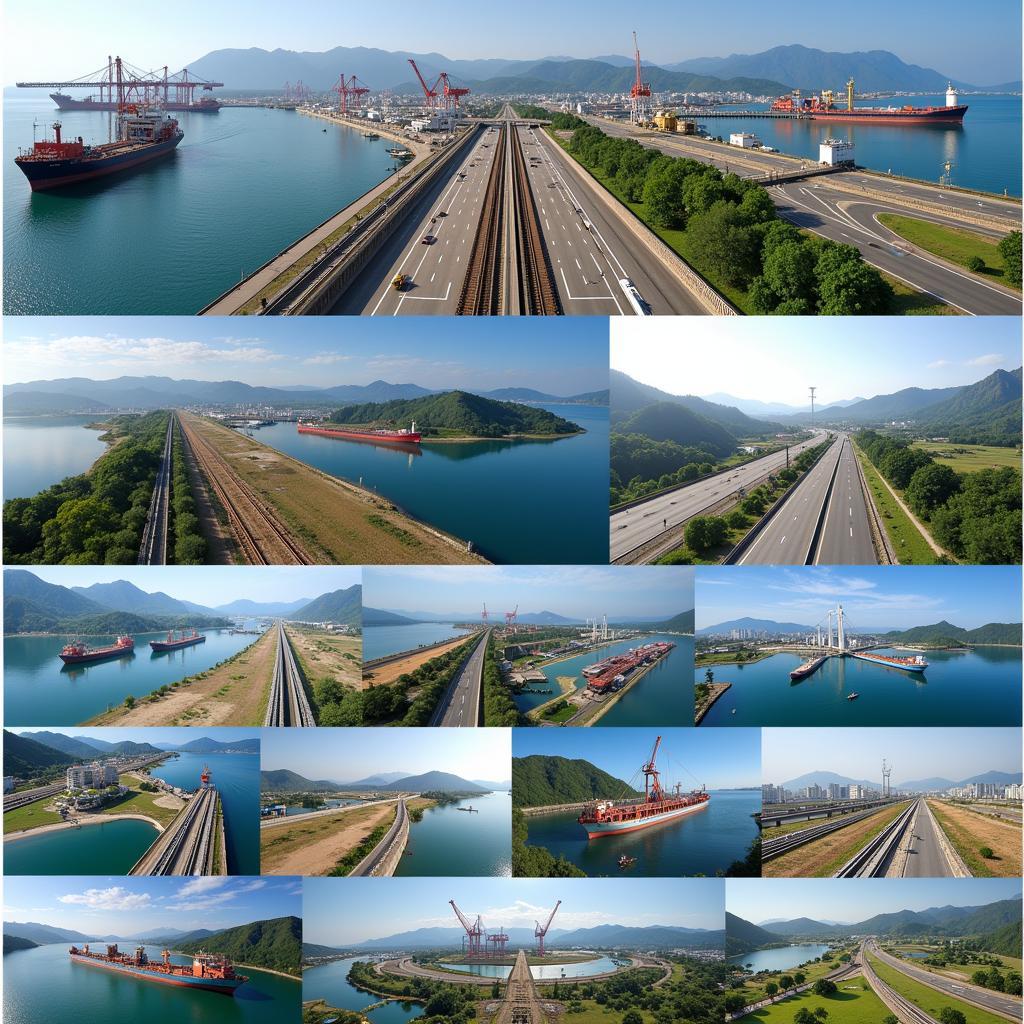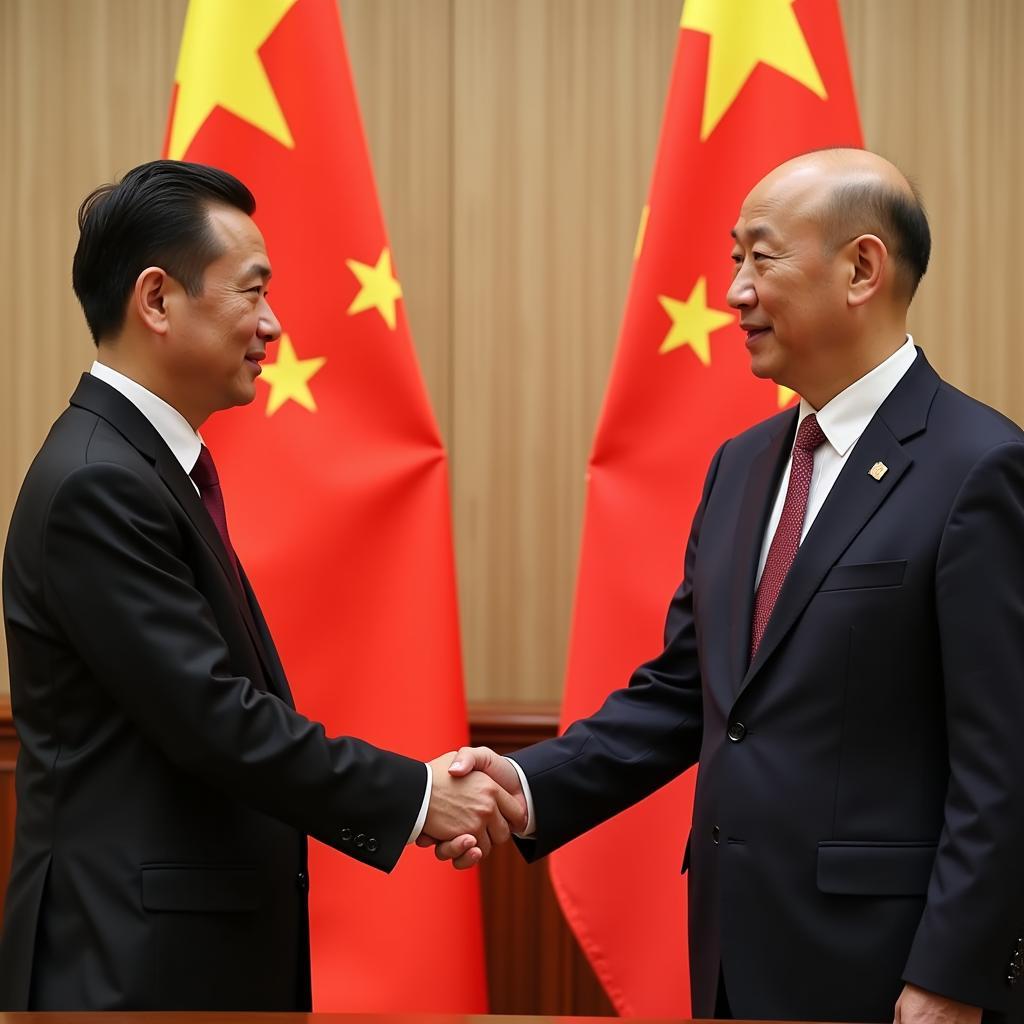ASEAN China relations are multifaceted, encompassing cooperation and competition, and are pivotal to the region’s future. This intricate dynamic shapes economic ties, political stability, and security in Southeast Asia. Understanding this relationship requires examining its historical context, current trends, and potential future trajectories. After the Cold War, ASEAN and China’s engagement deepened significantly, driven by economic opportunities and the need for regional stability. Now, just after a global pandemic, these ties are being tested and redefined.
China’s growing economic influence is undeniable, with substantial investments in infrastructure, trade, and tourism across ASEAN member states. This economic interdependence has fostered growth and development within the region. However, it has also raised concerns about potential over-reliance on China and the implications for ASEAN’s economic autonomy.
 ASEAN-China Economic Partnership: A Visual Representation
ASEAN-China Economic Partnership: A Visual Representation
Navigating the South China Sea: A Point of Contention
The South China Sea dispute remains a major challenge in ASEAN China relations. Overlapping territorial claims and maritime rights in this strategically important waterway have led to tensions and heightened military presence. ASEAN seeks a peaceful resolution based on international law, while China asserts its historical claims. Finding a common ground that respects the sovereignty of all parties involved is crucial for maintaining regional stability.
Economic Cooperation and Opportunities: A Driving Force
Despite the challenges, economic cooperation remains a significant driver of the ASEAN China relationship. The China-ASEAN Free Trade Area (CAFTA) has facilitated increased trade and investment flows, benefiting both sides. China’s Belt and Road Initiative (BRI) also presents opportunities for infrastructure development and connectivity within ASEAN. However, concerns about debt sustainability and transparency need to be addressed to ensure mutually beneficial outcomes.
What are the Key Areas of Economic Cooperation?
Key areas of economic cooperation include trade, investment, infrastructure development, and tourism. These sectors offer substantial potential for growth and development within the ASEAN region.
 ASEAN-China Infrastructure Collaboration Projects
ASEAN-China Infrastructure Collaboration Projects
The Art of Diplomacy: Balancing Interests
ASEAN has adopted a strategy of engagement and dialogue with China, seeking to manage differences and promote cooperation. This approach recognizes the importance of maintaining a stable and constructive relationship with a major power like China while upholding ASEAN’s own interests and principles. ASEAN centrality and unity are crucial in navigating this complex relationship.
ASEAN and the Art of Living with China
How Does ASEAN Maintain its Centrality in the Relationship?
ASEAN maintains its centrality by presenting a unified front in its interactions with China. This approach ensures that the diverse interests of all member states are considered and represented in discussions and negotiations.
Looking Ahead: The Future of ASEAN China Relations
The future of ASEAN China relations will depend on several factors, including the management of the South China Sea dispute, the evolution of the regional security architecture, and the trajectory of China’s global rise. Building trust and deepening cooperation based on mutual respect and shared interests will be essential for a stable and prosperous future.
 ASEAN-China Future Dialogue and Cooperation
ASEAN-China Future Dialogue and Cooperation
What are the potential challenges for the future?
Potential challenges include geopolitical competition, economic imbalances, and the need to address non-traditional security threats like climate change and pandemics.
Conclusion: ASEAN China – A Partnership in Progress
The ASEAN China relationship is a dynamic and complex one, characterized by both opportunities and challenges. Navigating this relationship effectively requires a nuanced approach based on diplomacy, cooperation, and a commitment to regional stability. The future trajectory of this crucial partnership will shape the political and economic landscape of Southeast Asia and beyond. The evolving ASEAN China dynamic demands continued attention and engagement from all stakeholders.
FAQs
- What is ASEAN’s approach to the South China Sea dispute?
- How does CAFTA benefit ASEAN and China?
- What is the significance of ASEAN centrality in the relationship?
- What are the key areas of cooperation between ASEAN and China?
- What are the potential challenges for the future of the relationship?
- How does the Belt and Road Initiative impact ASEAN?
- Where can I find more information about ASEAN-China relations online?
ASEAN and China Relationship Youtube
Situations & More Information
For those interested in learning more, you can find additional information on our website regarding specific topics like the South China Sea dispute, the impact of the Belt and Road Initiative on ASEAN, and the historical context of ASEAN-China relations.
We also encourage you to explore other related articles on our website, which delve deeper into specific aspects of this complex relationship.
Need Support? Contact us 24/7: Phone: 0369020373, Email: [email protected] or visit us at: Thon Ngoc Lien, Hiep Hoa, Bac Giang, Vietnam.
